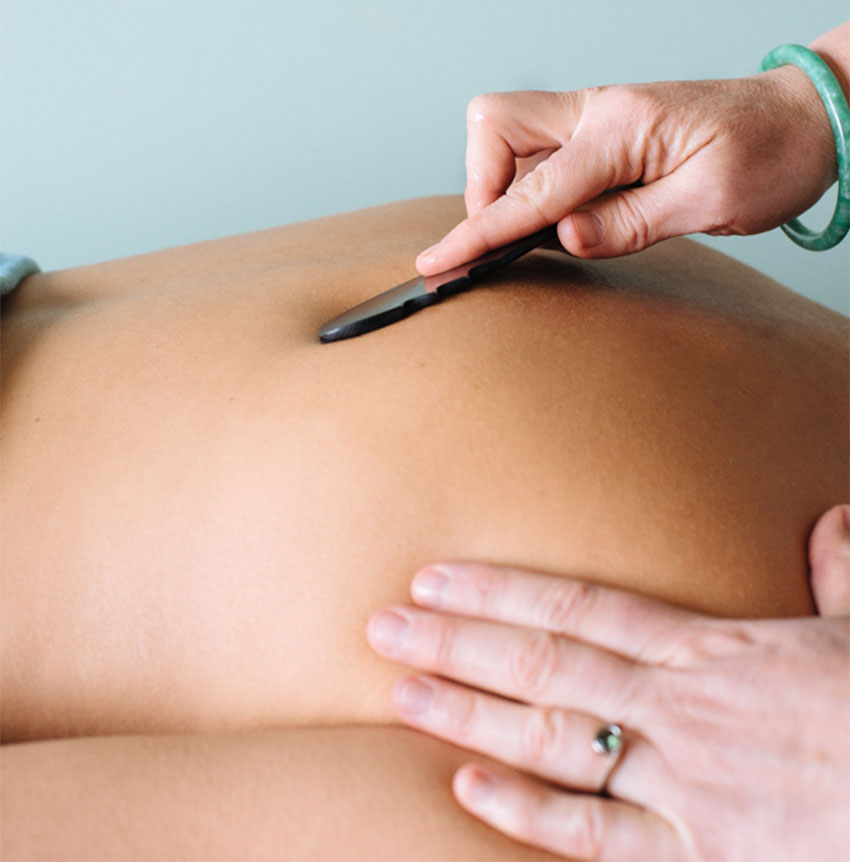Gua Sha produces transitory therapeutic petechiae that represent extravasation of blood in the subcutis. Or in basic terms a smooth tool is gently scraped over the top of oiled skin, producing blemishes on the skin that disappear in a few hours to a few days.

In China Gua Sha is used in Chinese Medicine for its immune stimulation properties and anti-inflammatory effects. Often for conditions such as fever, flu, cough and tight inflamed muscles, making it quite popular. Acupuncture Clinic Macleod Melbourne Victoria
Gua Sha
Gua sha (Chinese: 刮痧; pinyin: guā shā), meaning “scraping sha-bruises”, is a traditional Chinese medical treatment in which the skin is scraped to produce light bruising. Practitioners believe releases unhealthy elements from injured areas and stimulates blood flow and healing. It is sometimes referred to as “spooning” or “coining” by English speakers, it has also been given the descriptive French name, tribo-effleurage. It was transferred and translated into Vietnamese from China as cạo gió. This term translates roughly “to scrape wind”, as in Vietnamese culture “catching a cold” or fever is often referred to as trúng gió, “to catch wind”. The origin of this term is the Shang Han Lun, a ~220 CE Chinese Medical text on cold induced disease – like most Asian countries China’s medical sciences were a profound influence in Vietnam, especially between the 5th and 7th Centuries CE. Cạo gió is an extremely common remedy in Vietnam and for expatriate Vietnamese. There are many variants of cạo gió. Some methods use oil balm and a coin to apply pressure to the skin. It is also used in Indonesia, and in Java it is known as kerikan (lit., “scraping technique”) or kerokan, and it is very widely used, as a form of folk medicine, upon members of individual households. It was also used in India for treatment of high fever symptoms. People used metal spoon and water for skin lubrication.



